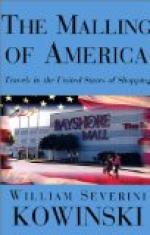During the first general attack of the british fleet the fort set fire to the Augusta, of 64 guns, and she shortly after blew up; and the Merlin sloop was so roughly handled, that she was hastily evacuated. The british admiral then procured a pilot, who carried two men of war, cut down for that purpose, on the Pennsylvania side of the island; a manoeuvre the Americans deemed impracticable. The works of the fort were now completely enfiladed, and on the 15th of November, the British began; a desperate attack, both from their ships on each side the island, and from a battery on the Pennsylvania shore.
The fort was supported by a battery on, the opposite side, and some row-gallies.
The british fire was heavy and well directed: they are supposed to have fired 1030 shots, weighing from 12 to 32 pounds, every 20 minutes, which, by the middle of the day, nearly levelled the works with the mud. This was the moment to storm the fort, which being lost by the British, the remains of the brave garrison made their retreat good to the Jersey shore the same night.
The British now having the complete command of the Delaware, totally dismantled this fort: in which state it remained till last year, when a french engineer was engaged to put it again into a state of defence. The works are already in great forwardness: the parapets are, according to the new french improvements, without embrasures, and the guns mounted on false carriages.
We also landed on several of, the other islands, and had tolerable sport.
At high water we proceeded on our voyage, and about twelve the next day arrived at Newcastle; whence I walked to Glasgow, a small village within a few miles of the river Elk, where general Howe landed his troops, after sailing two hundred and fifty miles up the bay of Chesapeak. His head quarters were at the house where I slept; the landlord also informed me, that I lay on the same bed general Washington occupied four times a year, in his way to his seat at Mount Vernon; an honour I did not exactly know the value of till the next morning, when he brought in his bill; after satisfying my conscientious landlord, I walked to French Town, which consists of two houses. This town is about 17 miles from the Delaware, and has a communication with the Chesapeak by means of the river Elk. But there is a nearer approximation of the Chesapeak to the Delaware, from a creek running into the latter at Apoquiminick, where the distance is only 7 miles: over this neck of land, all the trade between Philadelphia and Baltimore is conveyed in waggons. How soon would a canal be cut in such a situation in England!
I embarked in the Baltimore pacquet; had a pleasant sail down the Elk; in four hours entered the bay, and arrived here the same evening.
September 12th.
The yellow fever is certainly in town. Is it not astonishing the example of Philadelphia last year did not teach the inhabitants of Baltimore the necessity of building a lazaretto, and establishing a strict quarantine on all vessels from the infected islands in the West Indies? The first was not even attempted, and the last so carelessly performed, that I am mistaken if the fever has not been imported into more than one part of the town.




